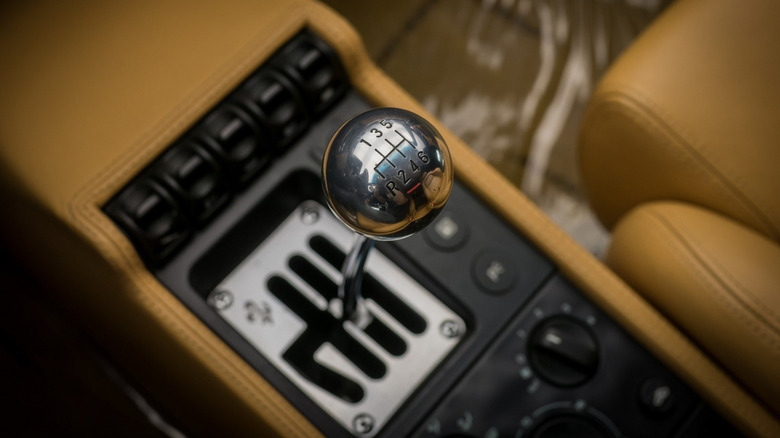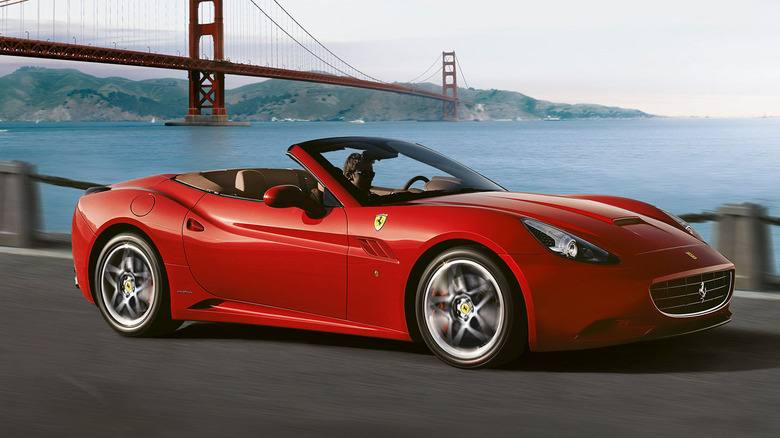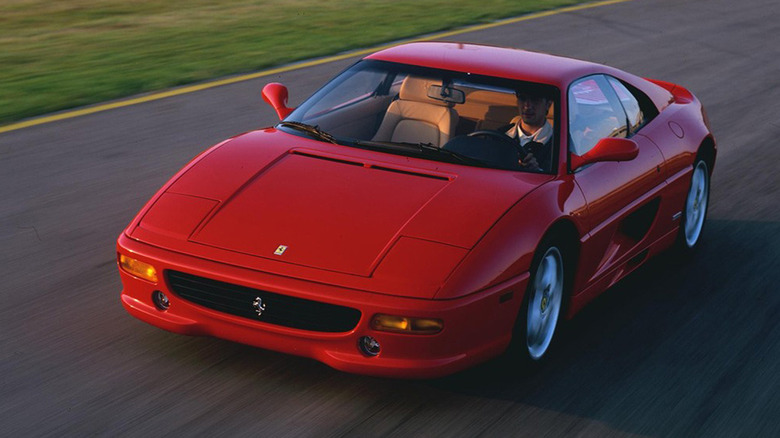Is Ferrari Really Bringing Back The Manual Transmission?
The experience of driving a Ferrari is nothing short of thrilling, with classic models famed for the level of engagement and feel they afford to those privileged enough to drive them. Opening the door and seeing a gleaming gated manual shifter became a common theme among many Italian manufacturers for decades, with some of the most famous examples of their supercars featuring a third pedal. Ferrari committed to this image and driving experience since the company's inception, a testament to their heritage rooted in motorsports and handmade, bespoke automobiles. A modern Ferrari reinterprets these classic experiences for the contemporary driver in all but one crucial department – Ferrari stopped building cars with manual transmissions in 2012. Nowadays, all Ferrari models sport a variety of dual-clutch transmissions. But that may change soon.
Recent reports from Australian publication Carsales suggest that the higher-ups at Ferrari may resurrect the third pedal, but nothing's definitively on the table thus far. Further, if they do decide to equip a car with a manual, it'd likely be a limited-production or one-off special-edition model like the "Icona" series, according to the rumor mill.
Given that a majority of Ferrari's clients almost certainly have a vested interest in cars, this could well be a case of "money talks," where people demonstrate a demand for a product, which then leads to its introduction. We've seen this sort of thing throughout automotive history, where customer backlash radically alters a major brand's course, or sparks a company to resurrect a dead product. Let's explore and see this might be the case for Ferrari as well.
Why Ferraris no longer have manuals
One fairly obvious question to ask is where did all the manual transmissions go in the first place? There's a simple and complicated answer: the former, bluntly, is that manuals barely sell these days, and certainly not on prestigious marques — in fact, less than 1% of new cars in US dealerships feature manuals.
Suppose you're in the market to purchase a Ferrari with a stick-shift and a warranty sticker. The first thing that needs to happen is there must be enough customer demand (i.e. money) for Ferrari to actually build a manual car. After the demand proves itself, next Ferrari must weigh the pros and cons of all the development time and financial burdens associated with producing what is effectively a statistically inferior and demonstrably niche powertrain. Lastly, unless you live in Modena, you'd likely have to visit a dealership or get the vehicle shipped to you. If manuals are scarce to begin with, there's no telling how long it'll take for you to actually receive the car you purchased.
For example, let's take a look at the Ferrari California, the last prancing horse with a gated-manual option. Ferrari produced the California from 2008 to 2017, marketed as a "gentle" model for upper-middle class individuals. It sounds perfect, then, for a six-speed — in reality, Ferrari sold exactly two Californias with a third pedal. They subsequently dropped the manual option in 2012, and it's not resurfaced since. And considering Ferrari pioneered paddle-shifting in motorsports and road cars alike, it's likely they'll only continue evolving this technology than regressing back.
What would it take for Ferrari to bring back the manual?
Then there's the economics behind a new manual Ferrari. Manual transmissions remain a popular choice in niche enthusiast communities, and we see various successful models boasting a six-speed as standard or an option. Cars like the Ford Mustang and Toyota 86 famously retain these powertrains, forming a core part of their identity within a subculture focused on the driving experience. Even some premium brands like Aston Martin are considering returning the third pedal to the masses, so it's not completely off the table for Ferrari. However, if there's one thing Ferrari lacks, it's mass-market appeal. Even the cheapest Ferrari teases a quarter-million US dollars, and that's a ton of expense to produce cars for a virtually nonexistent market (from a logistics standpoint). As mentioned before, nobody wanted it in 2008, and people keep buying DCT-equipped Ferraris, so where's the incentive for Ferrari to deviate?
In other words, the best-case scenario here is that a number of stars align to see a small number of limited-production units, possibly at the top of the food chain, intended as collector's items. It's more economically-viable from a business standpoint for Ferrari to produce only a few vehicles that'll instantly get spoken-for than producing a large number of mass-produced cars that might not even sell at all. So then your only real option for a prancing horse manual is a used model. And believe it or not, but there are actually quite a few models that are within reach of a more modest budget like the 348 TS – and yes, they have stick-shifts.


